A few weeks ago, I finally acquired the Casio G-Shock Rangeman GPR-B1000-1B, which is the successor in the G-Shock Rangeman series to the venerable Casio G-Shock Rangeman GW-9400.
Back in 2013, Casio released what is arguably one of the most popular modern G-Shock watches in the form of the Rangeman GW-9400.
For more information on the Casio G-Shock Rangeman GW-9400-3CR, check out my review from December 2013.
Upon release, the GW-9400 included a (then) new Triple Sensor (version 3) module in an appealing case design. Later, it became available in several color ways, which helped to increase sales. The Rangeman GW-9400 is functional and relatively stylish in a decently sized form-factor with a multitude of functions, making the Rangeman GW-9400 highly regarded.
Fast-forward to 2018 when Casio released the update to their Rangeman series in the form of the GPR-B1000.
The new Rangeman was actually announced in two different colors at the start of 2018, black (GPR-B1000-1) and green (GPR-B1000-1B), and the two models were released in Japan in March 2018.
I waited patiently for the United States release of the new Rangeman and the (black) GPR-B1000-1 units were starting to make it to Stateside dealers in July. But for some reason, the green GPR-B1000-1B was nowhere to be found. I started to inquire with a couple of Casio G-Shock dealers and was told that the GPR-B1000-1B was discontinued.
But how could this be? It had not even made it to the US, yet. I did a little digging and found a small mention on the G-Central website that indicated the GPR-B1000-1B was discontinued with no apparent reason.
The reference article I found noted that the GPR-B1000-1B sold in Japan actually carried a JR suffix, making it the GPR-B1000-1BJR. Apparently, a model code ending in JR is usually a (Japan) limited release.
I really wanted the green version as opposed to black, so I started searching online to see if I could locate a GPR-B1000-1B / GPR-B1000-1BJR. After checking various sites including Amazon, and coming across some shady looking foreign websites, I decided to try eBay.
I came across a listing on eBay by a seller in Japan with a solid rating. The price was $875 USD with shipping already included. The MSRP for the GPR-B1000 series is $800 USD, so the $75 premium is not bad considering it is coming in from Japan. With the fact that the GPR-B1000-1B is not getting a US market release, and the fact that the new / unused GPR-B1000-1BJR supplies are quite limited, I decided to take a risk on the eBay seller.
As it turned out, the seller’s positive eBay rating was reflected in the transaction, and the watch arrived only a week later from Osaka in perfect condition.
With the story of how I acquired the Rangeman GPR-B1000-1B out of the way, the next topic of discussion is the watch itself.
The Casio G-Shock Rangeman GPR-B1000 succeeds the GW-9400, and in doing so carries over many functions from the last Rangeman. The GPR-B1000 includes the Casio Triple Sensor, maintaining the barometer / altimeter, compass, and thermometer functions from the GW-9400.
The GPR-B1000 does add tide graphs and moon phase chart functions which are found on other G-Shock models (e.g. some Gulfman, Gulfmaster, and Frogman models).
Just like with its predecessor, the GPR-B1000 also has a stop watch, countdown timer, alarms, and sunrise/sunset data. The GPR-B1000 is also 200 meter water-resistant, shock-resistant, mud-resistant, and low temperature resistant, just as with the GW-9400.
One small difference between the GW-9400 and the GPR-B1000 that most will not notice is the change from an acrylic crystal to a sapphire crystal. Most G-Shocks use acrylic crystals (the ‘glass’ of the watch display), but Casio has been using sapphire in some of their higher tier timepieces. Acrylic is technically more impact and shock resistant, but sapphire is more scratch resistant.
There is one nomenclature that did not carry over from the Rangeman GW-9400 to the Rangeman GPR-B1000: Tough Solar.
The GPR-B1000 does have solar charging capability, but it does not have atomic time sync capability. Solar charging and atomic time syncing is what defines Casio Tough Solar.
But the lack of atomic time sync leads into why the GPR-B1000 is the next evolution in the Rangeman series.
The next evolution of the Rangeman line brings with it the addition of GPS navigation capabilities. The GPS navigation also includes GPS time-calibration, replacing the Atomic time sync function traditionally seen with G-Shock Tough Solar watches. Thus, the GPR-B1000 is technically not a “Tough Solar” G-Shock.
Among other features, the GPS navigation functionality includes activity logging, a tracking display, and point memory to record up to 60 sets of point data (time, date, latitude and longitude, altitude, etc).
The newly added GPS functionality is definitely well-suited for the Rangeman pedigree, which is intended to be a watch line for outdoors activities in even the most extreme conditions.
Casio also took the Rangeman series to the next level by making the GPR-B1000 a hybrid smartwatch with Bluetooth connectivity. In order to use the Bluetooth connectivity, the operator will download a smartphone app (Android or iOS) and pair it with the GPR-B1000.
Once connected, there are various aspects of the watch that can be managed through the G-Shock app, including configuring settings and downloading GPS navigation records.
The G-Shock app will also allow the operator to update the software on the actual GPR-B1000 watch. It will alert you when you connect if an update is available.
While there are several items about the G-Shock app and the Bluetooth features that I will not cover here, I did want to mention that when the GPR-B1000 is paired with a specific smartphone with the G-Shock app, it will facilitate time sync via Bluetooth with the phone.
Assuming the phone is within range of the GPR-B1000, the watch will attempt to time sync with the phone. Assuming the phone is also syncing time with a network time server (or the cellular network), then the reference times should all be accurate.
But, the addition of a GPS receiver and Bluetooth does not come without compromise.
First and foremost is battery life. While the GPS is active, the GPR-B1000 has a 33 hour or 20 hour run time, intermittent or continuous reception, respectively. GPS is definitely draws power, so it is important to understand this while using the watch, especially given that the GPS functions will be unavailable if the battery life drops below a certain threshold. It is actually not clear in the manual what battery percentage will result in the temporary loss of GPS functions, but it appears that you need better than 50% battery charge to use GPS.
NOTE: The manual indicates 3 out or 4 bars on the battery meter needed for GPS functions, but does not define what percentage range each of the bars in the battery icon reflect. I would estimate that 4 bars would be 76-100%, 3 bars would be 51 to 75%, etc.
Even though continuous GPS operation will result in battery life of only a day (give or take), a single charge is estimated to last two months with occasional GPS use. Without using GPS, a single charge will actually keep the watch running for approximately 29 months with basic power-saving options turned on.
While light (particular sunlight) will maintain the charge, Casio indicates that GPS functions can be restored (from a lower battery state) for one hour of GPS functionality after four hours in 50,000 lux conditions. Generally, mid-day bright clear sunlight will have an illumination 100,000 to 120,000 lux, but mid-day overcast light illumination could be as low as 1,000 to 2,000 lux.
NOTE: The GPR-B1000 manual cites a 50,000 lux sunny day (outdoors) at 12 minutes per day recommendation for maintaining charge of at least two bars on the battery icon.
So while it is possible to keep the GPR-B1000 charged throughout the day and have constant use of GPS, there will be conditions where battery life will deplete to that ~51% threshold disabling GPS.
For extreme cases, Casio includes a USB charger for the GPR-B1000.
The charger operates via wireless induction, much like the wireless chargers for smartphones. The charger has claws that clamp onto the back of the watch, and then a USB-A cable is plugged into the charger itself. The manual does not define how fast the USB charger will replenish the watch from a near dead battery state, but USB charging is much faster than solar charging.
NOTE: The GPR-B1000 manual implies that 1 minute on the USB charger is equivalent to 12 minutes of solar while outdoors on a sunny day (50,000 lux).
Speaking of the back of the watch, a new design feature of the GPR-B1000 is the ceramic watch back. This is a first for the Rangeman series and is a design choice, while attractive, is necessary for the wireless induction charging. The GW-9400 has a steel case back, and steel interferes with wireless induction charging.
While ceramic is extremely scratch-resistant (not scratch-proof, but pretty close), it is more brittle than steel and is more susceptible to cracking. This is counter-intuitive to the ‘shock-resistant’ title given to the Rangeman, although the shock-resistant nomenclature is actually more in reference to the watch movement and not the watch case.
Battery life is the primary compromise with the addition of the GPS receiver, but the secondary compromise is the size of the watch. The GPR-B1000 is significantly larger than the GW-9400 that came before it.
While the GW-9400 case dimensions measures 55.2 x 53.5 x 18.2mm at a weight of 93 grams, the GPR-B1000 measures 60.3 x 57.7 x 20.2mm and tips the scale at 142 grams. The GPR-B1000 is definitely larger and heavier than its predecessor, and is actually more similar in size and weight to the Casio G-Shock Mudmaster GWG-1000 series at 59.5 x 56.1 x 18mm and 119 grams.
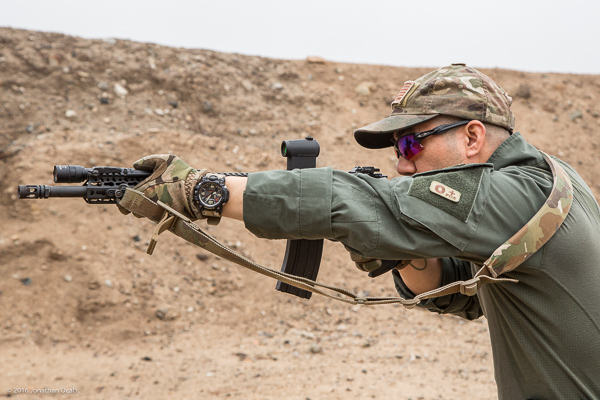
For more information on the Casio G-Shock Mudmaster GWG-1000-1A5, check out my review from December 2016.
Lastly, the next generation of the Casio G-Shock Rangeman line not only upped its game as far as features, but it also upped the price with the aforementioned MSRP of $800 USD. This is a 267% increase in price of the previous Rangeman (GW-9400 series) which has an MSRP of $300.
With all of the features of the Casio G-Shock Rangeman GPR-B1000 laid out, what are my opinions on this timepiece?
I feel that the GPR-B1000-1B is definitely a great next step in the G-Shock Rangeman line of watches. It takes all of the features from the predecessor, and builds on it with even more features, specifically the GPS functions. There really is not much more Casio can pack into the Rangeman short of becoming a full on smartwatch.
- Solar Charging
- Induction Charging
- GPS Navigation
- GPS Time-Calibration
- Point Memory
- Digital Compass
- Barometer
- Altimeter
- Thermometer
- World Time
- Stopwatch
- Countdown Timer
- Alarm
- Bluetooth (Low Energy)
- Mobile Link Functions (world time: over 300 cities, auto time adjustment, One-Touch Time Adjustment, easy watch setting, phone finder, route setting and log data management in GPS navigation, tide graph, moon data)
- Day / Date Display
- Full Auto-Calendar
- Sunrise / Sunset Time Display
One of the minor features of the GPR-B1000 that I love is that the main time / date display function (default display) can be modified for a few different styles or formats. The default style is to simply display the local / home time in large font, the month and date (MM-DD), and day of the week along with the DST icon if applicable and the battery capacity icon.
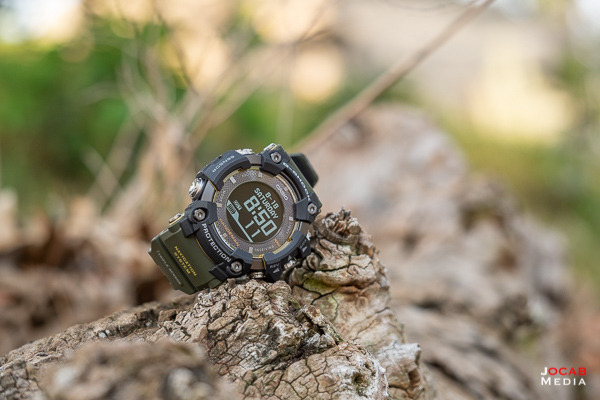
I like to see GMT / UTC time on the same display as the local time. So with the previous Rangeman (my GW-9400-3), I would usually cycle the function on the GW-9400-3 from the main date/time function to the world time function, which displays the selected world time (in my case, GMT) in large font and local / home time in smaller font.
The GPR-B1000-1B has the same type of functions, with the main function (time / date) and the world time function down the list.
But instead of selecting the world time function for display, the main function can be changed to display in a style that shows the home time in large font, the selected world time (in my case, GMT) in small font, along with the local month and day (MM-DD) and day of the week *and* the world time month and date (MM-DD) and day of the week.
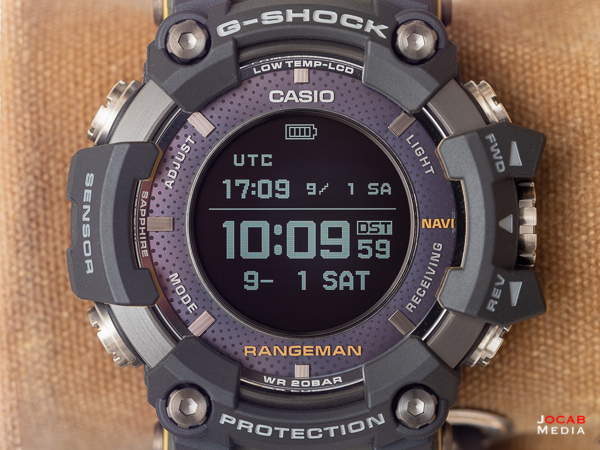
I absolutely love this display style and works great for me because I often reference against GMT / UTC.
But with all of the features that the GPR-B1000 will bring to the user, the point of contention on this watch will be the size. The GPR-B1000 is a very large watch. As mentioned earlier, the GPR-B1000 has case dimensions of 60.3 x 57.7 x 20.2mm and a weight of 142 grams and absolutely dwarfs the GW-9400.
It is going to appear large on most wrists, even by modern standards, but it does actually wear comfortably. Casio has done a good job designing the straps for the various G-Shock models to ensure that the straps can appropriately conform the watch case to the wrist.
Wearing it out and about for a few weeks, the watch is comfortable, but noticeably hefty on the wrist.
Much like with my Casio G-Shock Mudmaster GWG-1000-1A5, I found myself bumping the GPR-B1000-1B against objects on occasion when moving my arms around in typical fashion. My GWG-1000-1A5 has a couple scuffs on the watch case because of the random bumps against other objects, so I can only imagine the same will happen to my GPR-B1000-1B.
With all this stated, is the Casio G-Shock Rangeman GPR-B1000 series a watch to buy?
I will say that as much as I like my GPR-B1000-1B after several weeks of ownership, I feel that it is not going to be the best G-Shock for most people, especially given the price point.
The Casio G-Shock Rangeman GW-9400 series is still one of the best G-Shocks to get right now in terms of features and hard use. Today, the GW-9400-1CR (black) and GW-9400-3CR (green) can be found for $250 USD, give or take a few dollars. Even if the GW-9400 was only available at the MSRP of $300 USD, the $500 price increase to get to the GPR-B1000 is hard to justify for most.
The GPS navigation features are definitely cool and will serve the outdoor adventurers, and the Bluetooth + phone app functionality help make the GPS logging easy to manage and useable.
If you are looking to get your first Casio G-Shock for active use, I am going to recommend against the Rangeman GPR-B1000 series and will steer you towards the very capable Rangeman GW-9400 series. The lower price point to get the Casio Tough Solar and Triple Sensor features in the water-resistant, shock-resistant, mud-resistant, and low temperature resistant package of the GW-9400 is just too hard to beat.
If you already have a Rangeman GW-9400, I will say that you should probably opt out of ‘upgrading’ to the GPR-B1000 unless you absolutely want the GPS functions or simply just want to refresh your watch to the newer generation.
Although, if you are like me and are a watch enthusiast or simply like Casio G-Shock watches, especially the Master of G line of G-Shocks, then I highly recommend the GPR-B1000 series. I feel that the GPR-B1000 represents that next step in the G-Shock lineage and is going to be a significant timepiece with regards to the crossover into smartwatch capabilities.
If you are eager to acquire the GPR-B1000-1, now is the time. As I write this, the US release of the black Rangeman GPR-B1000-1 is in full swing. The authorized dealers have been receiving and selling out of their shipments as they arrive. The black GPR-B1000-1 appears to be the only color way that the US market will see for the time being. It appears the GPR-B1000-1B / GPR-B1000-1BJR will not be available as a US release. There is a third color way in the form of the GPR-B1000TLC-1JR which has a blue strap and red font accents. The Rangeman GPR-B1000TLC-1JR is the Team Land Cruiser collaboration with Toyota which as far as I know, was only released in Japan. This is definitely a limited release and is already marked up in price on the secondary market.
I honestly do not think Casio will produce many of GPR-B1000 series, especially in comparison to the GW-9400 series, which are plentiful on the new market. Given the price point of the GPR-B1000, Casio is probably going to produce and release at a slow trickle, so as to not outpace demand.
If you made it to the end of this write-up, I commend you and thank you for reading this review. Hopefully it will help you make an informed decision on whether or not to get a Casio G-Shock Rangeman GPR-B1000. I personally anticipate that my GPR-B1000-1BJR will be taking over the wrist time of my Mudmaster GWG-1000-1A3, and serve as my primary active hard use watch, while my GW-9400-3CR will be my go to active hard use watch when I want the smaller form factor.
For more independent information on the Casio G-Shock Rangeman GPR-B1000 series, checkout:

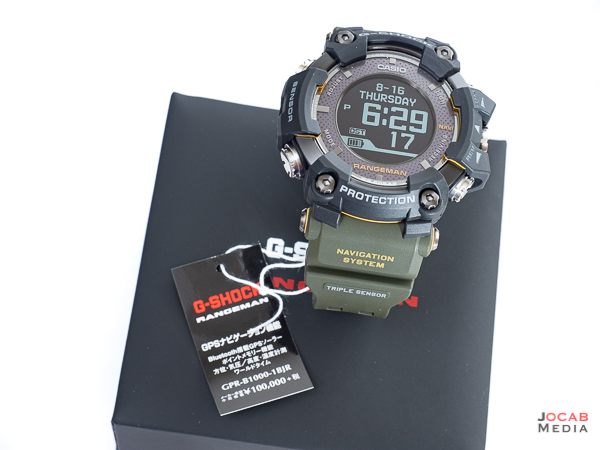
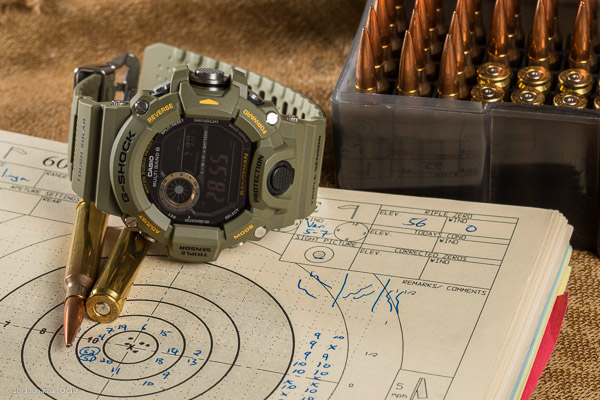
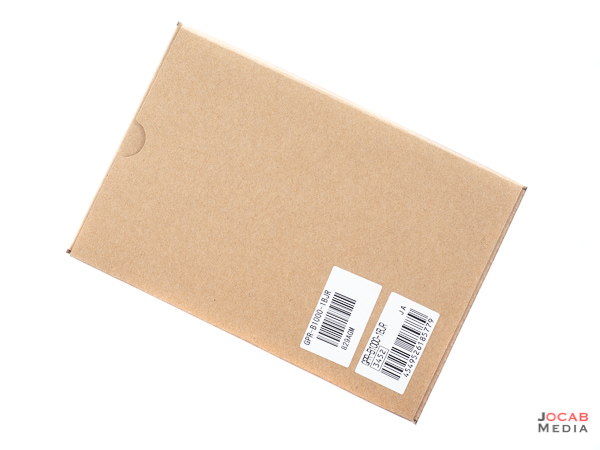
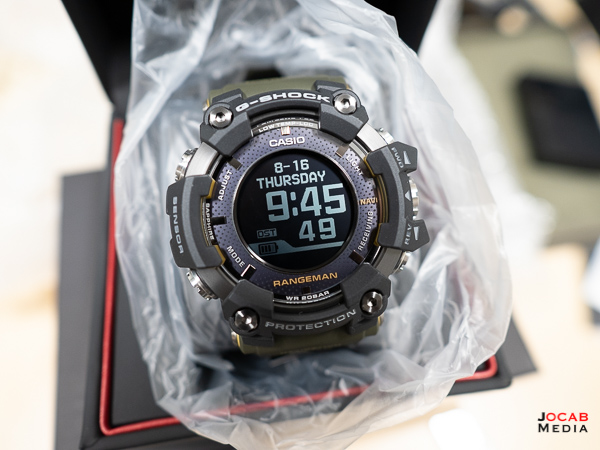
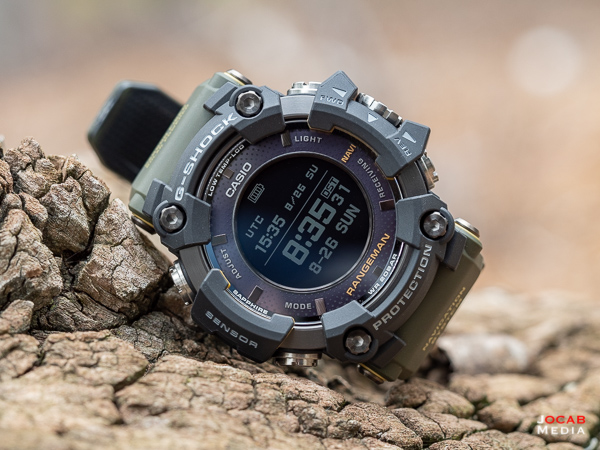
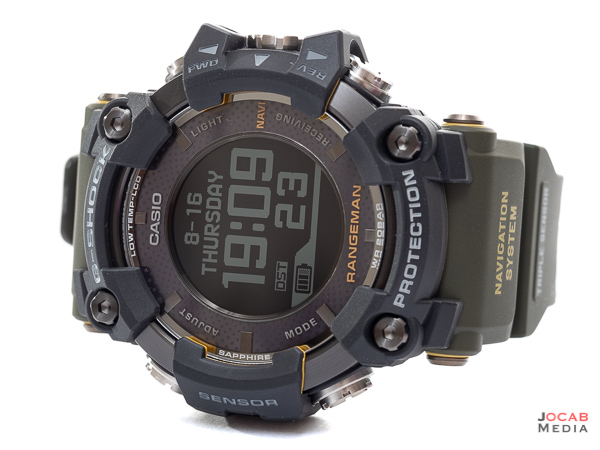
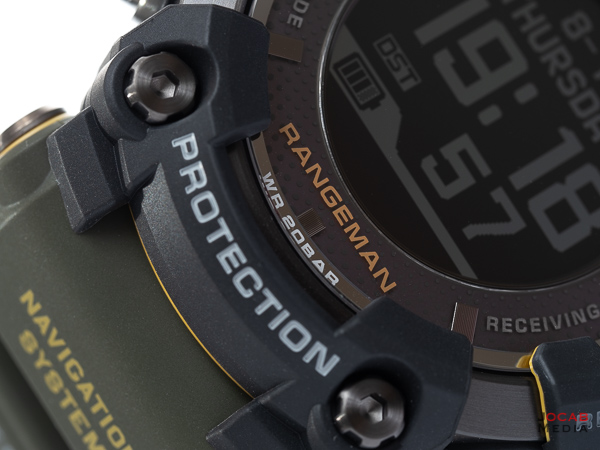
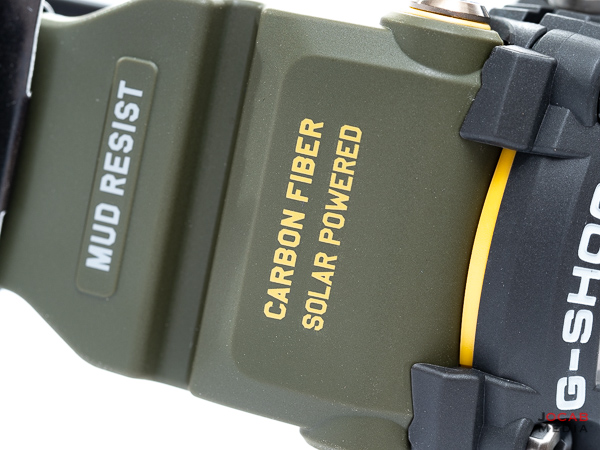
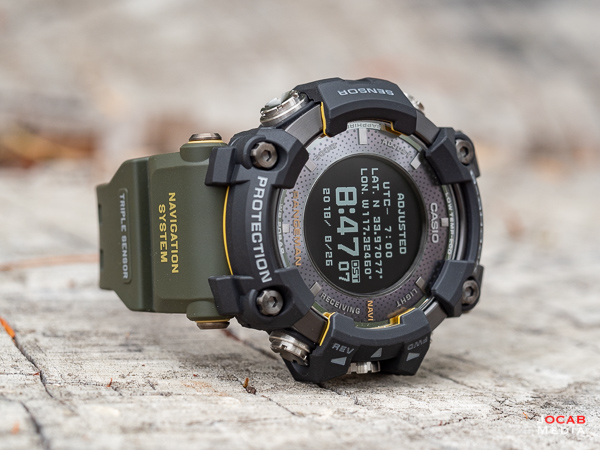
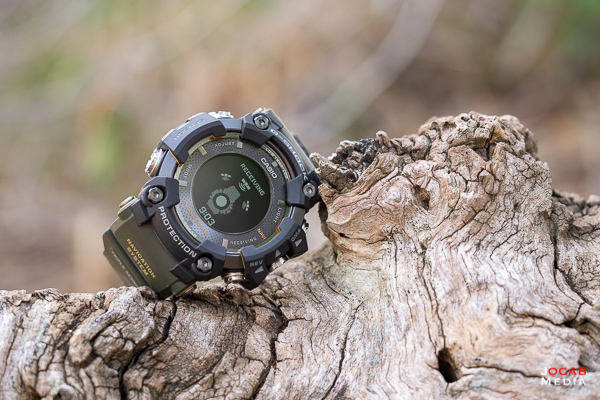
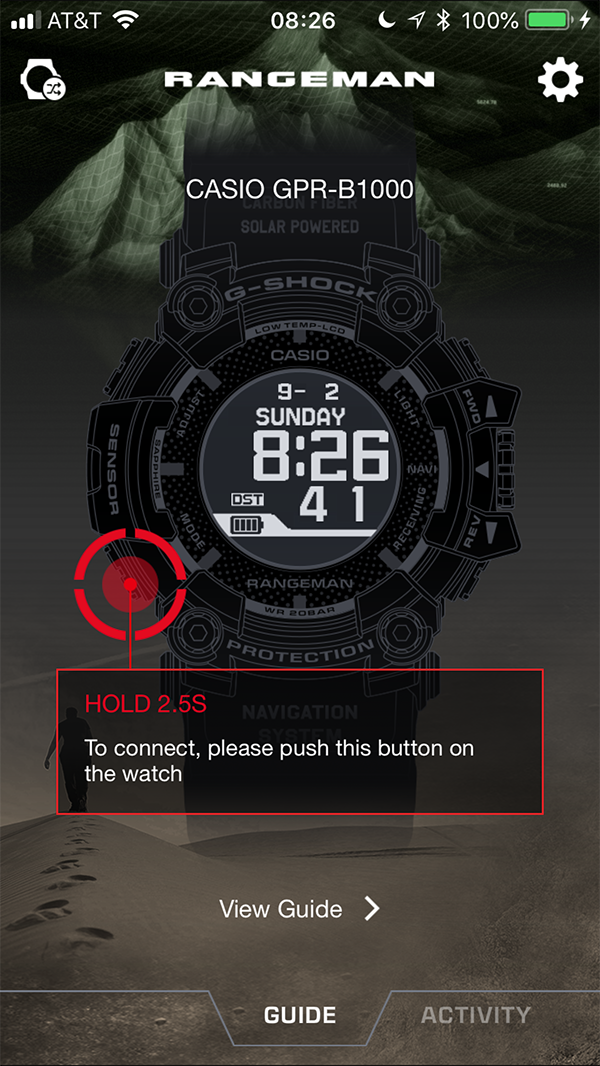
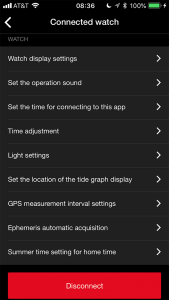
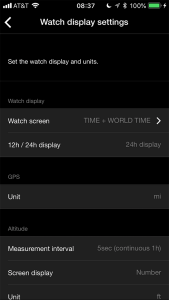
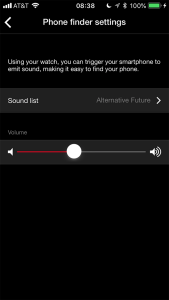
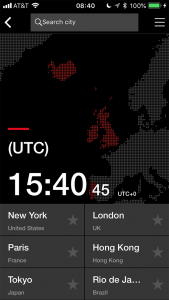
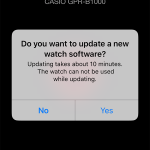
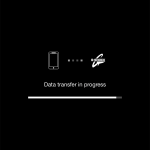
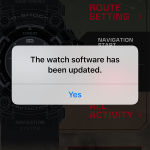
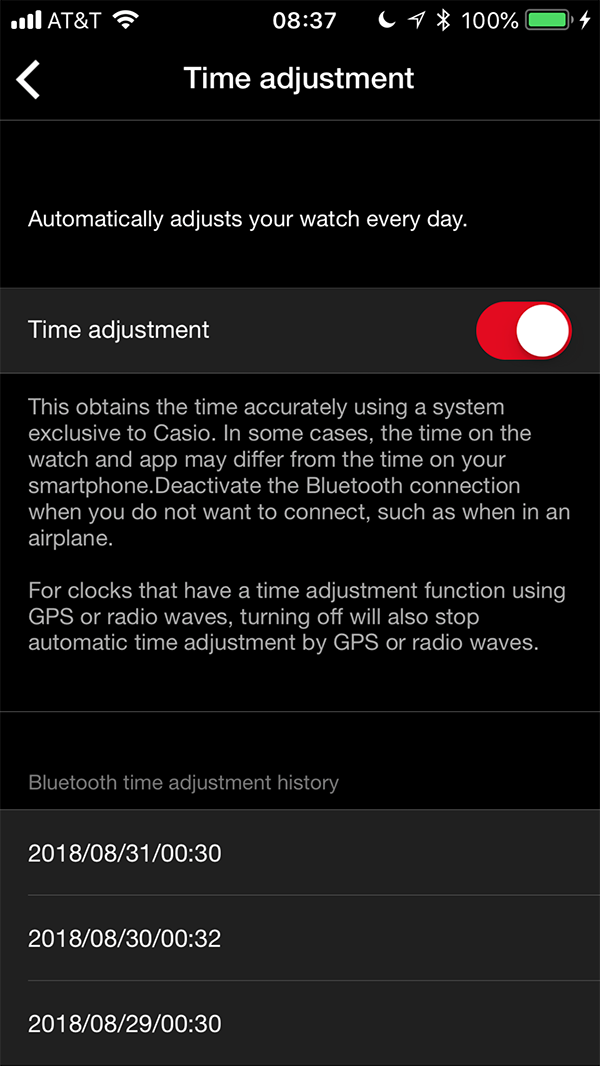
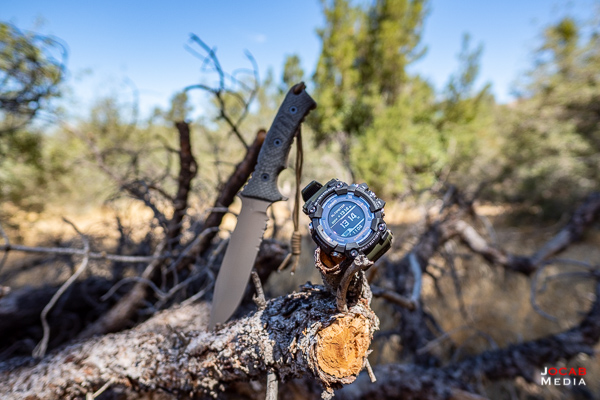
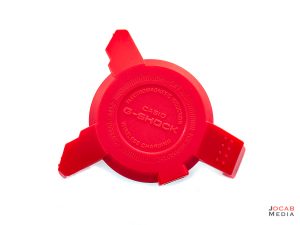
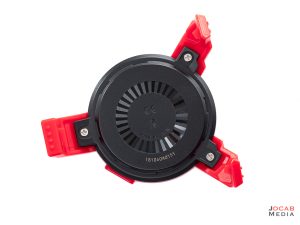
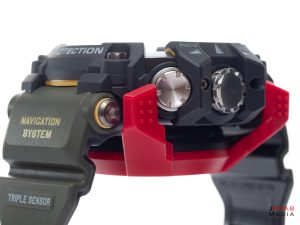
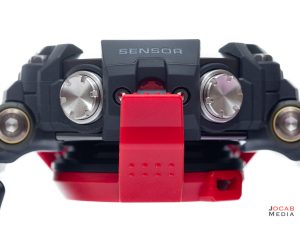
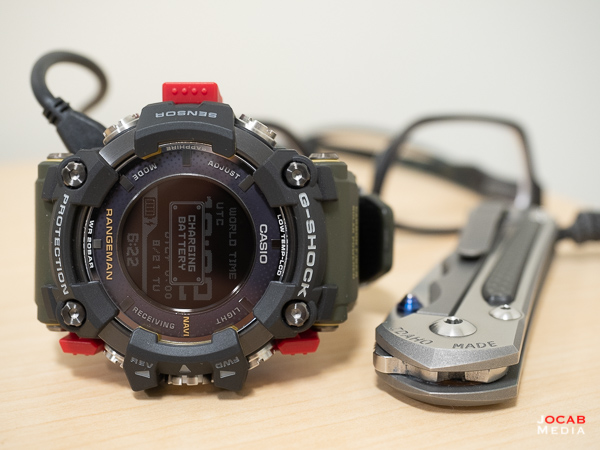
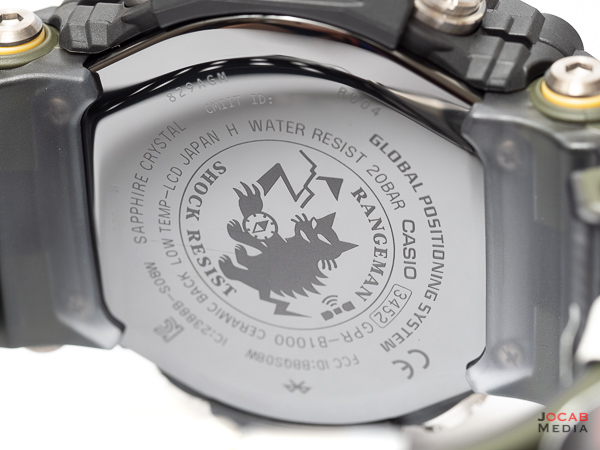
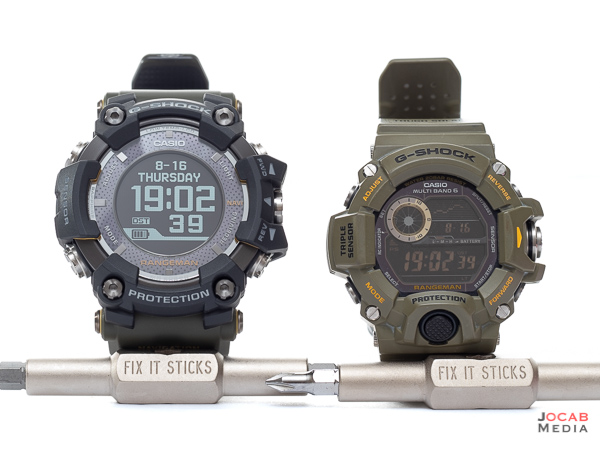
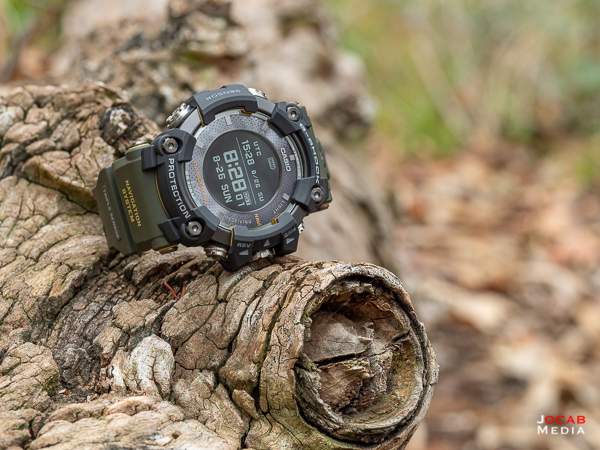
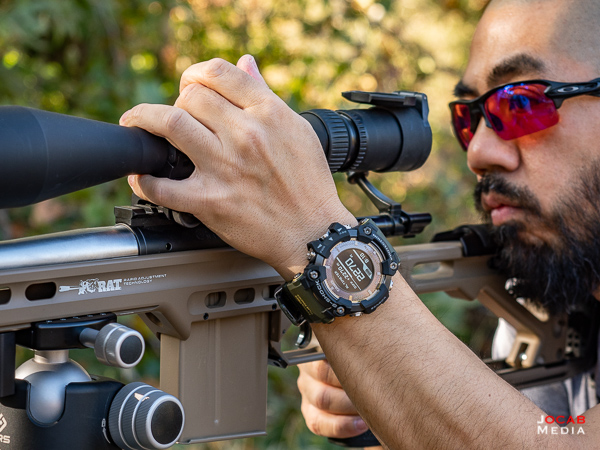
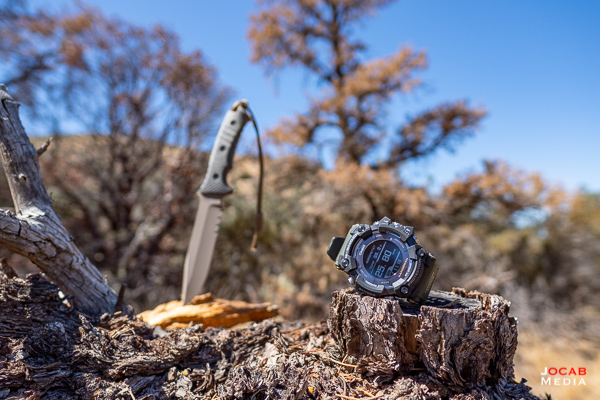
Skyhawk
Not mentioning Casio’s abysmal record of not honoring their warranty does a huge disservice to the reader, who has a fair chance to join the 100’s of 1000’s of us who purchased defective Casio watches and had Casio refuse to honor the warranty.
This watch isn’t the usual $16 disposable watch that Casio is known for. $300 is a lot of money to gamble with.
Vinod
Hi ocabj
First of all a great & nicely written review article which has helped answer many of my questions.
I am contemplating buying GPR B1000
just couple of queries before I finalize my decision
1) when they say 33 hours of GPS how exactly does it work – lets say I am on a 5 day trek in a remote region . Can I keep the GPS open so that every hour or more I can leave a way point – that way incase I get lost I can backtrack using way point . In such a scenario either while laying a way point or during backtracking when I might need to keep looking at GPS more often , will I run out of battery ? what is your understanding of this aspect.
2) I understand that incase I need an emergency evacuation , I can use this watch to send my exact GPS coordinate to rescue team.
Reason I plan to invest in such an expensive watch is the above two points ( without any link to smartphone or battery power bank) , if the watch wont be capable of doing these on solar power then I may as well fall back on cheaper Casio models because then the GPS functionality would be useless – if you get my point. The way I look at it I am okay to invest few hundred dollars extra provided this watch can stand by me in a sticky situation and help me get to safety.
ocabj
From what I understand, if you do frequent GPS tracking that will use the battery up. That 33 hour of life with heavy GPS use is assuming no charge. But this shouldn’t be a big deal because the solar charging should be able to maintain the power. If you want something for emergency GPS, I suggest taking a look at the Garmin inReach products. I just posted a review of the Garmin inReach Mini yesterday.
Dave
Solar will only extend you to 48hrs. Casio reckon 1min of USB charging is equal to 12mins solar…so taking the charger and a small rechargeable battery pack along in a plastic bag is probably a good idea.
Reza
Hi Ocabj,
Thanks for great reviews. Two questions:
1. How close can you zoom into the navigation map when following a pre-defined route?
2. What happens if you go off the pre-defined route e.g. you miss a turn or turn into a wrong track?
Matt
I think a good feature to add would be to let the watch display Lat/long & MGRS coordinates. Seems pretty good besides that.